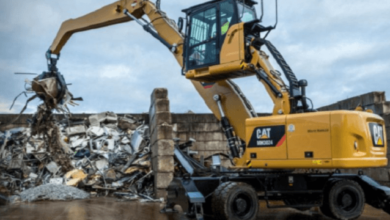How do riders prepare for bronc riding, both mentally and physically?

Introduction
Brimming with excitement and peril, bronc riding stands as one of the most thrilling events in rodeo sports. Aspiring riders must harness both mental fortitude and physical prowess to face the challenges presented by this demanding sport. This article delves into the intricate preparations required for bronc riding, offering insights into the mental and physical training that underpins a successful ride.
Understanding Bronc Riding
What is Bronc Riding?
Bronc riding is a rodeo event where a rider attempts to stay on a bucking horse for a set duration, typically eight seconds. There are two main types of bronc riding: saddle bronc and bareback bronc, each with its own set of rules and techniques.
History of Bronc Riding
Bronc riding has deep roots in the American West, tracing back to the skills required by cowboys to break wild horses for ranch work. Today, it has evolved into a competitive sport with strict regulations and organized events.
Physical Preparation for Bronc Riding
Building Core Strength
Core strength is crucial for stability and control during the ride. Riders engage in exercises such as planks, sit-ups, and leg raises to enhance their abdominal and lower back muscles.
Improving Balance and Coordination
Balance and coordination exercises, such as balance board training and agility drills, help riders maintain control while the bronc bucks unpredictably.
Cardiovascular Fitness
Riders must maintain peak cardiovascular fitness to endure the physically demanding nature of bronc riding. Running, cycling, and high-intensity interval training (HIIT) are common methods used to build endurance.
Flexibility and Stretching
Flexibility is vital to prevent injuries and ensure a full range of motion. Riders incorporate stretching routines and yoga to improve their flexibility.
Strength Training
Strength training, focusing on the legs, arms, and shoulders, is essential. Squats, lunges, deadlifts, and bench presses help riders develop the power needed to handle the intense forces during a ride.
Practice Rides
Regular practice rides on mechanical bulls or trained broncs help riders hone their skills and get accustomed to the physical demands of the sport.
Mental Preparation for Bronc Riding
Visualization Techniques
Visualization involves mentally rehearsing the ride, envisioning every movement and reaction. This technique helps riders build confidence and prepare mentally for various scenarios.
Stress Management
Managing stress is crucial in bronc riding. Techniques such as deep breathing, meditation, and mindfulness help riders stay calm and focused under pressure.
Goal Setting
Setting realistic, incremental goals keeps riders motivated and provides a clear path for improvement. Goals can be related to skill development, physical fitness, or competition performance.
Building Mental Toughness
Mental toughness is developed through facing challenges head-on and learning from failures. Riders often engage in mentally challenging activities and push their limits to build resilience.
Positive Self-talk
Positive self-talk involves replacing negative thoughts with encouraging and affirming statements. This helps riders maintain a positive mindset and boost their confidence.
Learning from Experience
Analyzing past performances and learning from mistakes is critical. Riders often review videos of their rides and seek feedback from coaches to identify areas for improvement.
Diet and Nutrition
Balanced Diet
A balanced diet rich in protein, complex carbohydrates, and healthy fats fuels the body for training and competition. Lean meats, whole grains, fruits, and vegetables are staples in a rider’s diet.
Hydration
Staying hydrated is essential for peak performance. Riders drink plenty of water and electrolyte-rich fluids to maintain hydration levels.
Supplements
Some riders use supplements, such as protein powders and vitamins, to support their dietary needs and enhance recovery.
Meal Timing
Timing meals to optimize energy levels is important. Riders often eat smaller, frequent meals to maintain steady energy and avoid feeling sluggish.
Safety Precautions in Bronc Riding
Proper Gear and Equipment
Wearing appropriate gear, such as helmets, vests, and spurs, protects riders from injuries. Ensuring equipment is in good condition and fits properly is crucial.
Knowing the Horse
Understanding the behavior and tendencies of the bronc is essential. Riders work closely with trainers and observe the horses to anticipate their movements.
Emergency Preparedness
Riders must be prepared for emergencies. Knowledge of first aid, having a plan for injuries, and knowing when to seek medical attention are vital aspects of safety.
Training Regimens and Routines
Daily Training Schedule
A structured daily training schedule helps riders balance physical workouts, mental preparation, and practice rides. Consistency and discipline are key to improvement.
Rest and Recovery
Rest and recovery are critical components of training. Riders ensure they get adequate sleep and take rest days to allow their bodies to heal and rejuvenate.
Working with Coaches
Coaches provide valuable guidance, feedback, and motivation. Riders benefit from the expertise of seasoned professionals who help them refine their techniques and strategies.
Mental Health and Well-being
Support Systems
Having a strong support system, including family, friends, and fellow riders, provides emotional support and encouragement.
Counseling and Therapy
Professional counseling and therapy can help riders cope with the mental challenges of the sport, such as anxiety and stress.
Mental Health Awareness
Riders prioritize their mental health by recognizing signs of mental fatigue and seeking help when needed. Maintaining a healthy mind is as important as physical training.
Competitions and Events
Preparing for Competitions
Preparation for competitions involves tapering training, mentally rehearsing the event, and ensuring all gear is in top condition.
Strategies for Success
Strategies such as studying the competition, understanding the judging criteria, and planning specific tactics for each ride enhance performance.
Post-Competition Analysis
After competitions, riders analyze their performance, review feedback, and set new goals for improvement.
Bringing it All Together: The Bronc Rider’s Lifestyle
Bronc riding is not just a sport; it’s a lifestyle. The dedication to physical training, mental preparation, and overall well-being defines the life of a bronc rider. The relentless pursuit of excellence and the thrill of the ride drive these athletes to push their limits and achieve greatness.
FAQs
How do riders deal with fear in bronc riding?
Riders use techniques like visualization, positive self-talk, and stress management to cope with fear. Building experience and confidence through practice also helps mitigate fear.
What exercises are best for improving core strength for bronc riding?
Exercises such as planks, sit-ups, leg raises, and Russian twists are effective for building core strength.
How important is mental preparation in bronc riding?
Mental preparation is crucial. It helps riders stay focused, manage stress, and build the mental toughness required to handle the challenges of bronc riding.
What kind of diet should a bronc rider follow?
A balanced diet rich in protein, complex carbohydrates, and healthy fats is essential. Hydration and proper meal timing also play a significant role in maintaining energy levels.
How do riders practice for bronc riding without getting injured?
Riders use mechanical bulls and trained broncs for practice, wear protective gear, and follow safety protocols to minimize the risk of injury.
What is the role of a coach in bronc riding?
Coaches provide guidance, feedback, and motivation. They help riders refine their techniques, develop strategies, and prepare mentally and physically for competitions.
Conclusion
Preparing for bronc riding is an intricate process that demands dedication, discipline, and a holistic approach. By combining physical training, mental preparation, and proper nutrition, riders can enhance their performance and achieve success in this exhilarating sport. Embracing the lifestyle of a bronc rider means continuously striving for improvement and finding joy in the thrill of the ride.





